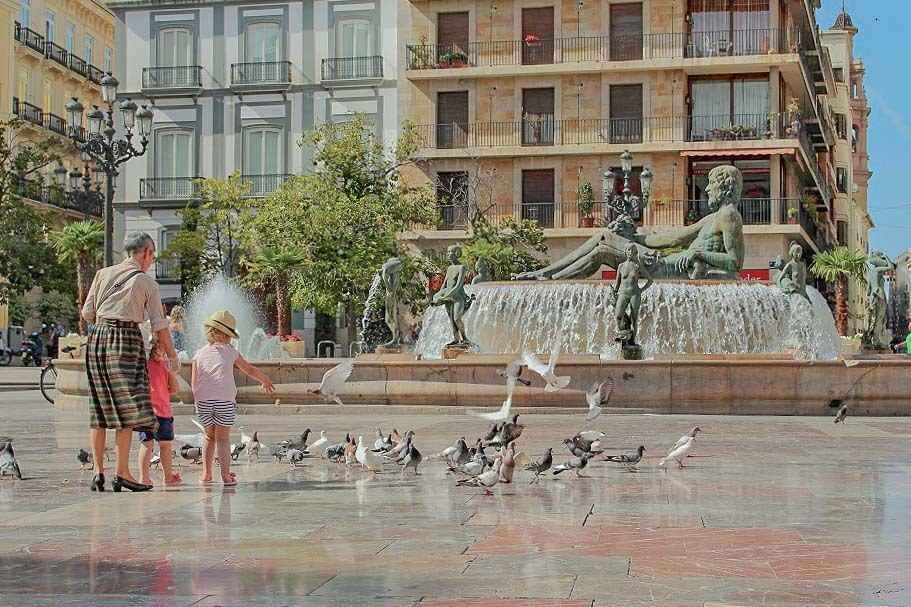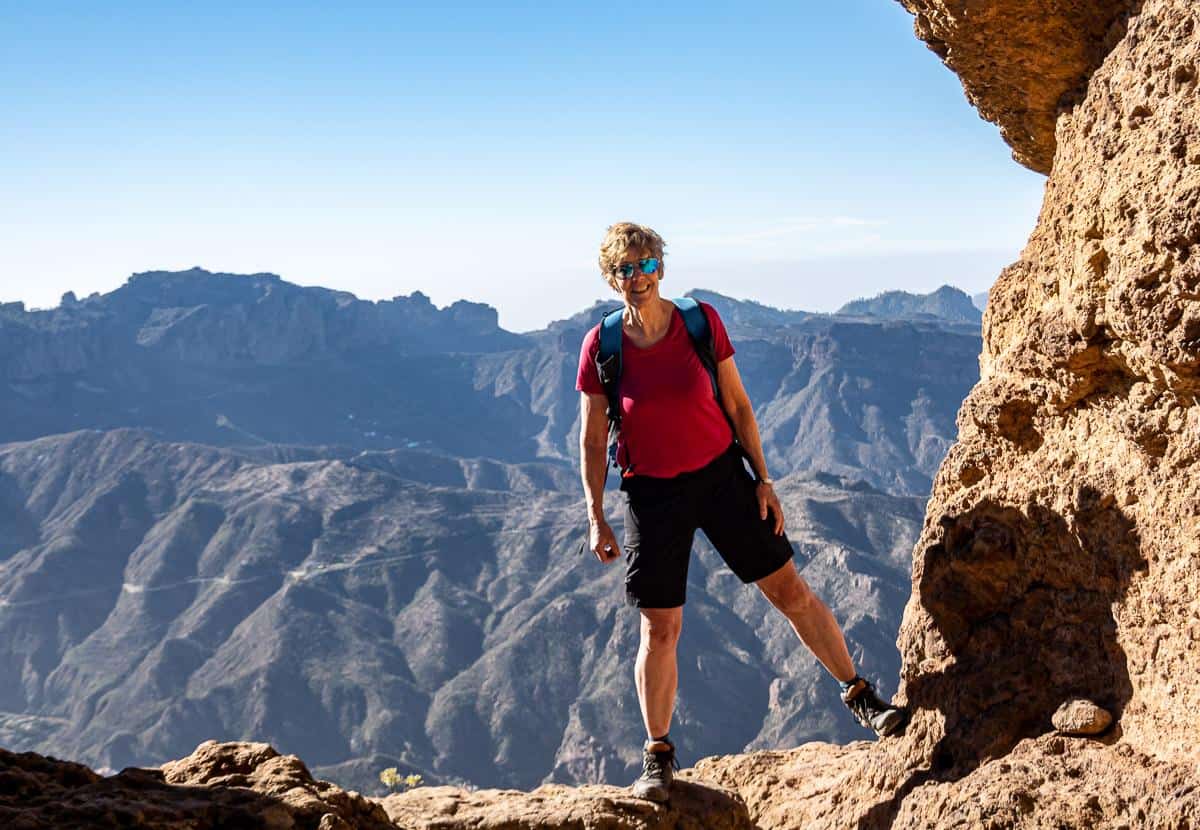Jodhpur – Must See Places in Blue City of Rajasthan
12 min read
Table of Contents
I always look forward to travelling in Rajasthan for the love of its food, language, music, enterprising people and ‘dhora’ or sand dunes. Jodhpur had been on my travel list for a long time.
The best part of flying to Jodhpur is that the airport is very close to the city centre, thanks to Maharaja Umaid Singh. I did not see sand dunes from the window seat, but it was fun spotting the fort and the palace from the plane.
We had enough time on the day we landed to explore Umaid Bhawan Palace museum which closes by 5pm. It was good to find it open for visitors on republic day. In Jodhpur, we mostly used auto-rickshaws and Uber when available.
Brief History of Jodhpur
It is said that, in the 15th century, Rao Jodha founded Jodhpur and his son Rao Bika founded Bikaner on the advice of sage Bhagwati Karniji, also known as Karni mata.
The foundation stone of Mehrangarh fort was laid on an isolated rock in 1459. Foundation of Junagarh fort of Bikaner was laid in the barren wilderness called Jangaldesh in 1488.
Karni mata used her influence to unite different clans and bring stability in the times of utter chaos in Rajasthan. On multiple occasions, I have prayed in Karni mata temple in Deshnoke without knowing that she played a major role in shaping Rajasthan’s history.
Places to See in Jodhpur
Umaid Bhawan Palace
Built 80 years ago, it is one of the largest palaces in the world and most popular highlight of Jodhpur. A relatively small section of the palace is converted into a museum which has a dedicated entrance.

H.H Gaj Singh II, who is the 39th generation of Rathore dynasty, and his immediate family live in one wing. The other wing is a luxury hotel. This ornate palace is a beautiful blend of Indian and European architecture.
It is said that this luxurious private residence with 347 rooms was built to provide gainful employment to people of Jodhpur over 15 years, as a part of drought relief measures.
The main hall has an exhibition on the making of the palace, the royal family’s interests and contributions.
Murals of Umaid Palace
As you enter, you notice a massive mural high up on the concave wall below the dome and another one diametrically opposite, behind you. The former is a scene from the victory of General Durgadas Rathore’s army in the battle against Aurangzeb’s army, with Mehrangarh fort in the background. The latter is a scene from the wedding procession of Maharaja Umaid Singh with Umaid Palace in the background. These were painted by a Polish artist Stefan Norblin.
Hanuman ji – believed to avert any crisis, etched in glass is displayed below the second mural. I wonder if the reason behind putting this up was purely religious or if it was metaphorical too; to draw a parallel between Durgadas who went to great lengths to preserve Rathore dynasty’s rule in this region. Hanuman ji is also known for his unfailing service to Shri Ram.
There are various spaces exhibiting antiques, portraits, multidimensional paintings, weapons, lifestyle objects and furniture that were once used in the palace.
Oriental Room at Umaid Bhavan
Oriental or Throne room is the most interesting of them all. It is decorated with mesmerising murals that depict important events from ancient epic Ramayana. These were created by the same Polish artist.
At a first glance, the figures in the murals do not come across as Sri Ram, Sita and Lakshman. These paintings were seriously damaged over decades due to harsh weather conditions. They were restored to their glory by a team of polish conservators a decade ago. Check out the documentary for more details on the murals.
It reminded me of the Ramayana Paintings in the Grand Royal Palace of Bangkok.
There is a vintage car collection exhibited outside the palace, closer to the entrance. We saw a bigger collection in Jodhpur’s Khas Bagh.
You can find videos online on rituals and celebrations that still take place in this palace.
Ghantaghar
We took a rickshaw to the city’s centre Ghantaghar or clock tower.

This ornate 5-tiered structure is made of sandstone with balconies, jharokhas etc. It was closed for maintenance but I imagine the view of the city and the fort from the top of the tower will be worthwhile.
The market around the clock tower is known for embroidered fabrics, handicrafts, spices, flavoured tea etc. It’s a busy thoroughfare making it difficult to walk in the market.
We managed to grab local delicacies – mirchi bada / pakora and samosa at the Shahi Samosa Arora Namkeen right outside the ghantaghar circle. Shri Mishrilal hotel is perfect to enjoy their special Rabri.
One cannot vouch for the hygiene levels of food outlets in this area but the only other place where I have had equally yummy mirchi bada is Chotu Motu in Gangashahar.
Pal Haveli
We walked towards the other gate of the market and decided to explore Pal Haveli. Pal Haveli is converted into two different heritage hotels and both of them have a rooftop cafe with fantastic views.

Sipping ginger tea in the evening in one of their cafes was a marvellous experience. We watched a playful setting-sun changing the shades of sky, fort with blue houses on one side and Gulab sagar lake on the other side. There was a drone capturing it all too.
Toorji ka Jhalra Stepwell
We explored this part of the city on foot and passed by many beautiful havelis, mostly converted to hotels and shops selling exquisite stuff. Eventually we reached an ancient stepwell Toorji ka Jhalra, which holds water 300 feet deep.

Over 250 years old, this step well was built by Rani Tawarji who modelled it on the stepwells of her hometown in Gujarat. It was common for royal women in this region to oversee constructions for public welfare.
I read that it was submerged for over a century and was restored by RAAS Hotel which shares its wall with it. We noticed a chic hotel room overseeing the stepwell. We had dinner in one of the adjacent cafes that had a spectacular view. There were quite a few eating options in this area.
It was a delight to see a well-lit stepwell accessible to the public round the clock and people gathering there to unwind without littering.
Jaswant Thada
We took a rickshaw for a trip to Jaswant Thada.

Jaswant Thada is a royal cenotaph built next to Devkund lake surrounded by rocky mountains. This magnificent white marble shrine was built by Maharaja Sardar Singh after cremating his father Maharaja Jaswant Singh II here, fulfilling his last wishes.
Some call it the Taj Mahal of Marwar. It is built like a temple with shikhara spire on top, like Orchha’s Chhatris. It is a royal crematorium.
The whole place came alive because of a talented local singer Birbalramji who was singing Rajasthani songs to the rhythm of Ravanahatha on the walkway. On my request, he picked notes of Game of Thrones’s theme music and briefly played it with his touch to the melody.
Mehrangarh Fort – Jewel of Jodhpur
Rao Chunda established his capital at Mandore, which he received as dowry. Two generations later, Rao Jodha built Mehrangarh fort on an isolated rock with a higher elevation and better natural defences, few miles away from their capital city – Mandore. Mehrangarh means ‘fort of the sun’ – a reference to the clan’s descent from the Suryavmasha or solar dynasty.

The fort is 400 feet above the surrounding plain. It has been the headquarters of Rathores for over 500 years. Over 500 yards long, it is one of the largest forts in Rajasthan. It has seven well-preserved, colourful, beautifully painted and decorated period rooms, many open courtyards and six galleries.
Palaces of Mehrangarh Fort
Phool Mahal where musical performances were held is the grandest of the period rooms. Moti Mahal, the oldest surviving King’s court with whitewashed walls and colourful glasses appeared prettiest of them all. It must have looked great with lamps lit in all its niches. Our guide mentioned that the Maharaja used Sheesh Mahal as a meditation room.

The fort and its palaces were built over a period of 500 years. It is apparent that the custodians of the fort have done a splendid job in restoring and preserving the fort. There are museum shops and a local market where handicrafts are sold inside the fort. The museum shops have an online presence too. Mehrangarh Museum trust has put together good information on the fort and the places around, on their website.
There is a provision to use lift in this fort to avoid walking on the steep ramp from the ticket counter to one of the fort’s terraces, for a nominal cost. There is a cafe on this terrace called Mehran terrace which opens for dinner. Once you finish the fort tour, you will have to walk back to the same terrace to take the lift down. The access to the lift closes by evening. Even ramps are well designed for a comfortable walk.

The only time I managed to get a decent Rajasthani thali in Jodhpur was at Cafe Mehran, located closer to the entrance of fort. It is a level below the Mehran terrace area.
Chamunda Temple at Mehrangarh Fort
You must visit Chamunda mataji temple inside the fort. If you are not religious, go for the splendid views of the blue city. I don’t know why this was not a part of the usual fort tour. Nonetheless, it pulls the crowd. You have to walk up from Cafe Mehran to reach this temple.
It is a great stretch to take pictures. It leads to a big open courtyard lined up with old but manicured trees. There are sandstone benches to sit under their shade. It was lovely to see folk singers, sitting in the arches and courtyard along the way. The city view from the temple is great. They were allowing women to take a shorter route to the temple while men had to take a longer one (although it was a beautiful path too). I wonder if this was done after the stampede in 2008.
Trivia : Local population believes that this fort and Junagarh fort in Bikaner are the only two forts that remain in the hands of Rathores because Karni mata laid their foundation stones. All other Rajput forts were abandoned.
Walk from the fort to the blue city (old city)
Walk from the fort to the city was another highlight of this trip. If you like to walk, then do not take the usual fort exit. Take the path that leads you to the city. Ask the guards to guide you.
 When you exit the fort, the first thing you see are the iconic blue houses. Some of them have paintings on them. It’s a pretty sight. I gathered that these houses are painted blue from a mixture of indigo and limestone available from the local quarry.
When you exit the fort, the first thing you see are the iconic blue houses. Some of them have paintings on them. It’s a pretty sight. I gathered that these houses are painted blue from a mixture of indigo and limestone available from the local quarry.
Blue colour was used to identify Brahmins’ houses back in the day but that distinction is no longer there. Now people paint it blue to reduce the heat inside the house. Some say the blue colour keeps the mosquitoes and other insects away.
These blue houses give Jodhpur the name ‘Blue City’ of Rajasthan.
Khas Bagh
It is a beautifully designed hotel where rooms are reserved only for the royal family members and their guests. We decided to get dinner in their open air garden restaurant.
I had the best millet green chilly roti here. They seem to have multiple restaurants in their premises and are planning to open a rooftop restaurant soon.
We found a bigger collection of vintage cars of the royal family here.
Sardar Government Museum at Jodhpur
Named after Maharaja Sardar Singh, it was formally opened in 1936. Located in the middle of a big public park, Ummed garden, it has a wide range of artefacts and relics that celebrate the culture of Rajasthan.

Some of the most interesting ones were scroll containing horoscope of royal personality from 19th century, ragamala paintings, paintings of hindu goddesses, stereoscopic viewers, trade objects from south east asia, 20th century maps of Jodhpur and around, Jain paintings and sculptures and more.
Pages from books by Sir Samuel Swinton Jacob were displayed here. It was mentioned that he was so invested in sharing the beautiful buildings of Rajasthan with his contemporaries that he published the “Jeypore portfolio of architectural details”, a detailed 12-volume collection of precise drawings that explain the construction and design of various elements that characterise Indian architecture, namely
- Copings and Plinths
- Pillars: Caps and Bases
- Carved doors
- Brackets
- Arches
- Balustrades
- String and Band Patterns
- Wall and Surface
- Dados and Frescos
- Parapets
- Chattris and Domed Roofs
- Jharokha and Balcony Windows.
My mind boggled to see his drawings. When we look at miniature paintings or exquisitely detailed massive structures, they do capture our attention with their beauty. But, it is so hard to imagine what kind of top notch artists must have existed in our country who made them possible. We don’t even know the names of so many of them but they left their legacies behind.
Places to See Near Jodhpur
Mandore Garden
Mandore is a half hour drive from Jodhpur city, almost a suburb of Jodhpur city. We stopped at Mandore garden for about an hour, enroute Osian.

It served as a capital for different Jodhpur kings over many centuries. Even after Rathores moved their capital to Jodhpur, Mandore remained the royal cremation site for more than 400 years until Jaswant Thada was built. It was fascinating to see a series of intricately carved cenotaphs with tall shikharas in the garden. We did not expect such beautiful and massive structures here. When I looked at them from a distance, I was filled with respect. Maybe because they looked so much like temples.
The more we explored, we sensed that the spirit of the place was gone. There is an ongoing effort to preserve this site. Mehrangarh trust has adopted Mandore fort under Adopt a heritage scheme. We ran short of time and could not explore Mandore palace, hall of heroes, museum, temples which I figure are worth visiting.
We were told that Balsamand lake palace near Mandore, which is run by the royal family, is a beautiful place to spend an evening. They seem to serve great Jodhpuri meals. You can stay in this palace too.
Osian
Osian is a one and half hour drive from Jodhpur city. If you don’t plan to go to Jaisalmer, this place has sand dunes, not quite like Jaisalmer though.

Osian is known for its beautiful temples. Sachiya mata temple must have appeared awe-inspiring in Osian’s landscape. The area is too packed now and too many modifications have been done to manage the crowd.
The reason I went to Osian was to breathe in the air where my oswal ancestors once lived and to spend time on sand dunes. The dunes were overcrowded. Despite fast moving jeeps, we managed to hike on dunes for quite some time until we reached a quiet spot to watch the sunset.
Travel Tips for Jodhpur
- You need at least 4 days to comfortably see all the things mentioned above. Visit to Jaswant Thada, the fort and walk in the blue city will take one full day. Visiting Umaid Bhawan Palace, Government museum and around can take another day. Visit to Mandore gardens and around can take another day. A day is required for Osian if temples and ruins interest you.
- Check for the music festivals organised in the fort and around by Mehrangarh Trust, to plan your dates.
- Days can be sunny even in the winter. Stoles, hats and sunglasses are useful.
- Walk in the old city without any destination in mind. There is an ongoing urban regeneration project that aims to restore the walled city of Jodhpur to its former glory.
Connectivity & Accommodation

- Karni Bhawan Heritage hotel is just a 5 minutes drive from the airport. It does not have an elevator. Uber was easily available in this part of the city.
- Heritage properties around Toorji ka Jhalra looked good. Check for elevators in heritage properties. They might have rooms on the ground floor.
- We found auto-rickshaws more convenient to explore the city, especially when it came to navigating through narrow lanes of the old city. We paid Rs 200/hr.
- Jodhpur is well-connected by roads and trains.
- There are multiple direct flights operating between Jodhpur and Delhi / Mumbai. You can directly fly in and out of many other major Indian cities too.
This is a guest post by Khusboo Lalani.
 Khusboo focuses on the long-term consequences of human pursuits and systems to learn from them. She has worked in the software industry for 13 years.
Khusboo focuses on the long-term consequences of human pursuits and systems to learn from them. She has worked in the software industry for 13 years.






